
Should you be buying a pair of custom-made skis this winter?
We asked the experts whether a made-to-order pair of custom-fit skis is a worthwhile investment…
Words: Jonathan Wells
The public’s demand for luxurious, bespoke belongings is snowballing. It started out small, with Savile Row suits and idiosyncratic signet rings kicking off our cravings for personalised, one-of-a-king possessions. But, in recent years, we’ve seen a flurry of new options and offerings; an avalanche of tailor-made, high-end goods.
Sectors from the luxury luggage market to the blend-your-own spirits industry have all introduced bespoke services; with made-to-order manufacturing expanding to deliver on our collective desire for more unique, singular and special products. And this snowballing trend has even drifted onto ski slopes.
Over the last two decades, skiers have started to switch up their expectations of equipment. And brands around the world have begun to start-up and switch track — crafting and creating made-to-order, custom-fit skis for enthusiasts and professionals alike. From refining the rides and altering the cambers, to purely decorative projects, these ski-makers have been tweaking every inch and aspect of established ski design. They’ve changed the shape and size of skis. They’ve made skis stiffer, and softer.
But is this level of customisation worth it? If you invest, will you really see a difference on the slopes? We asked the manufacturers, experts and enthusiasts: Should you be buying a pair of custom-made skis this winter?
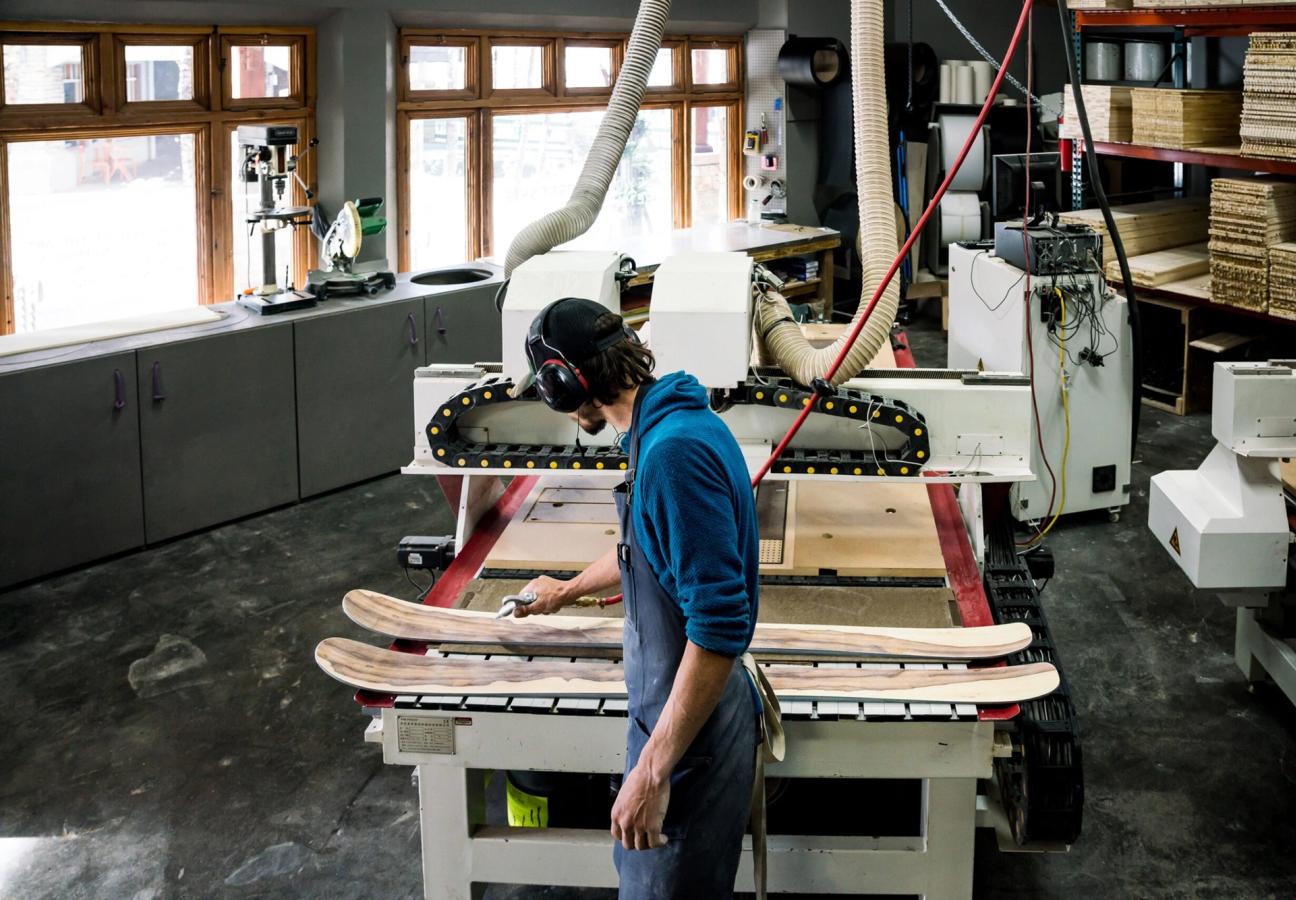
Claudio Menz is the CEO and founder of Valaiski. Based slightly south of Zurich, his brand was built on one key cornerstone; craftsmanship. Each of Menz’s alpine artisans has over 25 years’ of ski-making experience — and he wanted to unleash this expertise on the bespoke market. Using customers’ skill levels, weights, heights and preferred areas of use, Valaiski creates equipment that eclipses the sort you can find in stores. But why do mainstream, mass-produced skis not work for everyone?
“Well, I would say they do work for everyone,” says Menz. “However, the majority of skiers will not be able to ‘max out’ their riding capabilities on them. And this isn’t just true for expert skiers, but also intermediate skiers who might not yet have the skills to control the boundaries of their comfort zones.
“Customised skis,” he adds, “will significantly widen this ‘sweet spot’, make skiers feel much more comfortable — and therefore safer in conditions of slope, snow or speed that they would normally be hesitant to enter into.”
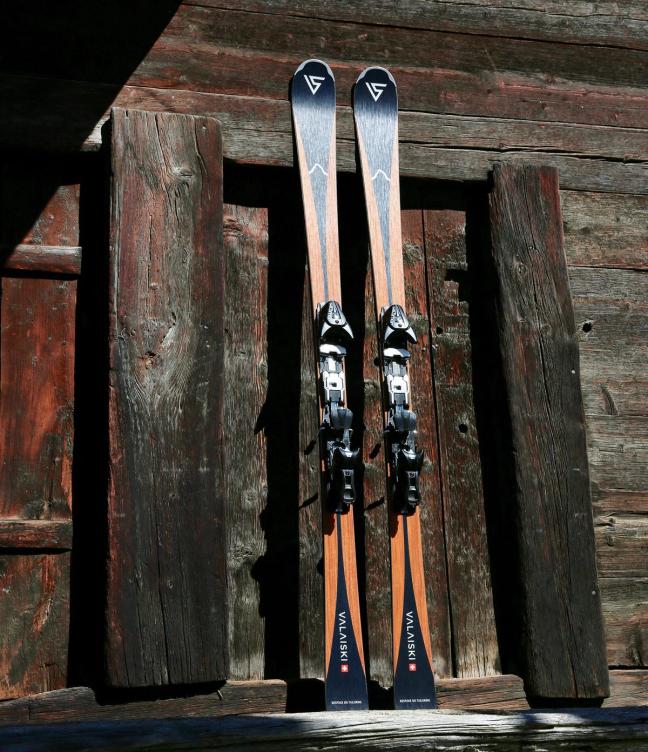
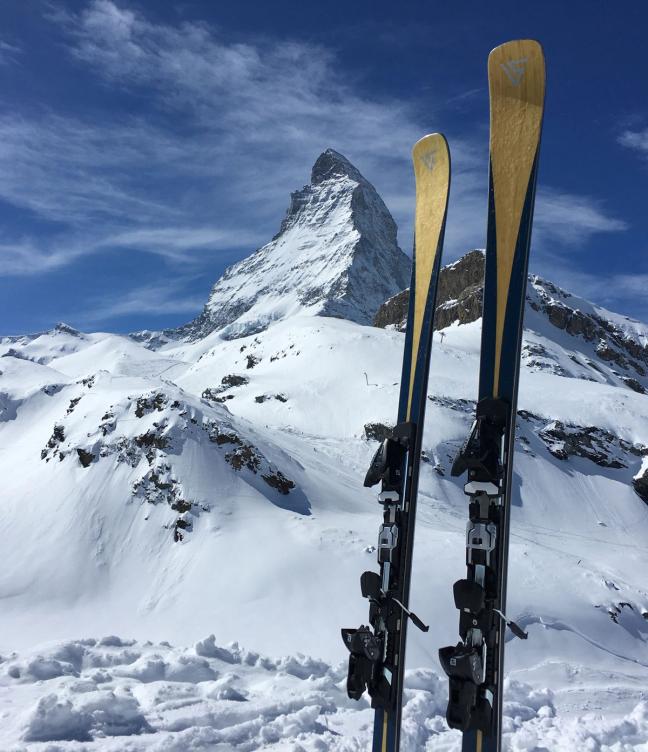
It all comes down to comfort, then — and unlocking your hidden potential with conducive equipment. But it’s not all about performance for Menz. Valaiski also creates custom skis for those with atypical body types; including the particularly small or tall. If you want to ski, he says, but struggle to buy ‘off the rack’, buying bespoke skis isn’t a luxury — it’s a necessity.
“Our mission,” adds Menz, “is to make skis that are accessible to the general, ski-loving community. Because this type of custom skis had previously only been available to professional ski athletes.”
And it’s a mainstream market niche that several other savvy brands have also identified. But, as with any emerging market, each start-up has approached the opportunity a little differently. Where Valaiski’s tailoring follows a stringent six-step process (including identifying your ‘Terrain Preference’ and ‘Turning Style’), other outfits have developed their own, distinct ways to fit customers for bespoke skis. Brands like Wagner Custom Skis, in southwestern Colorado’s Mountain Village.
“And the main benefit of Wagner Custom skis,” explains brand founder and CEO, Pete Wagner, “is the fit. We use our proprietary ‘Skier DNA’ fitting system to match the skier to their optimal design. Our skis are tailored to the individual skier based on length, width, sidecut, tip/tail shapes, camber/rocker, and materials. The stiffness and flex pattern is also calibrated based on the individual’s height, weight, and skier preferences”.

It’s an exact, snowy science — and one that, on average across the bespoke ski industry, will cost you somewhere between £1k and £2k per pair. But, with over one thousand material combinations at Wagner alone, there are a lot of potential decisions, and the scope to really drill down into the details and create something that will significantly improve your form.
“Because mass-produced skis are made for a general skier,” Wagner explains, “Your height, weight and skill level likely aren’t the exact match for a mass-produced ski. So the ski will likely feel too stiff or too soft, too long or too short, or just not have the right ‘feel’.
“We also do beautiful, hand-finished wood topsheets, as well as fully custom graphics,” he adds. “The individual gets to choose their own graphic.”
Which brings us to the flip-side of the bespoke ski industry. While several brands have started using science to customise and tailor-make skis, others have taken a more artistic approach — allowing customers to personalise their equipment to better express themselves on the slopes. Lewey Payne is the director of Douk Snow UK, and he believes that “while some people are fine with something a little more plain, others prefer to have a ski more suited to their unique riding style”.
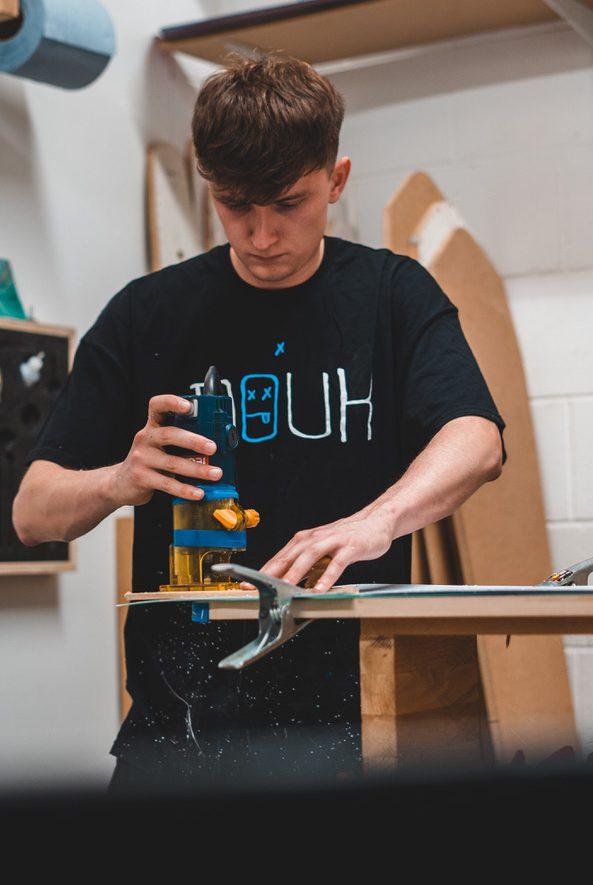

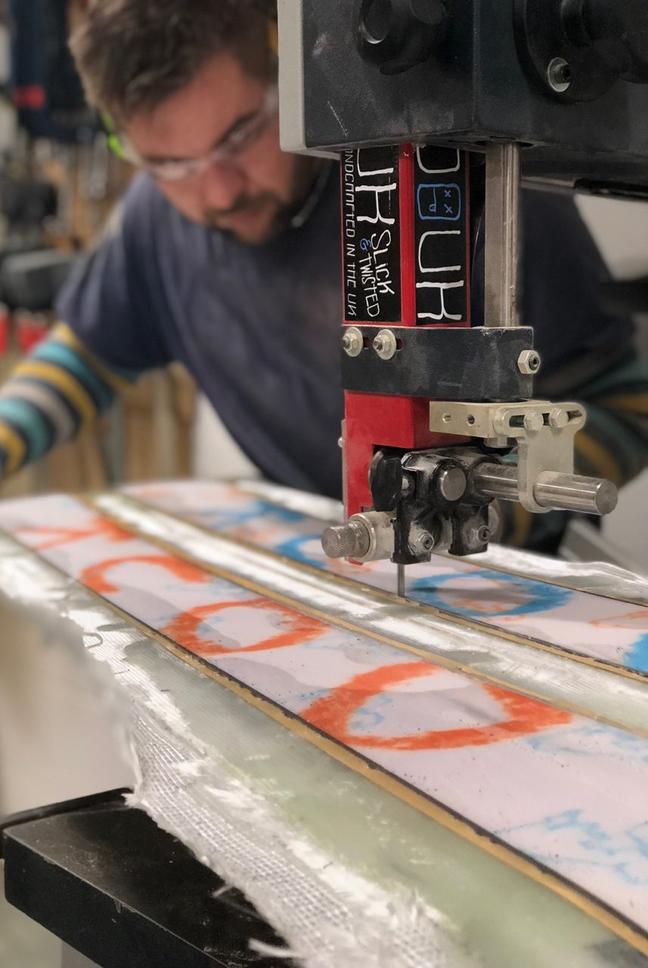
“If you have a design in mind,” Payne explains, “we can pretty much make anything that’s possible — whether that’s fan art for your favourite band, or photos from your trips away. We have produced for some small start-ups, all the way to big companies like Superdry. It’s the perfect way to promote, or express yourself on the mountains.”
And it doesn’t end there. Douk Snow also allows customers to speak directly to the craftsmen making their specific skis and — if you want to make the process as personal as possible — offers you the chance to visit the brand’s Worcestershire factory to build your own skis or snowboard under the watchful eye of the team.
“If requested,” says Payne, “we can even use a tree that you have cut down yourself.”
It’s an impressive level of customisation — and this less-technical, more-esthetical side of the custom-ski industry is even attracting grandees of the snowsport world. Konrad Bartelski is an alpine ski racer, and the most successful Briton to ever compete in the Alpine Skiing World Cup. He recently discovered that Atomic Ski, an Austrian company, offered a personalisation service — so he bought himself a self-designed customised pair.
“I have skied for 64 years now,” says Bartelski, “and it is only this coming season that I will ski on a bespoke pair of skis. It’s the first time. And these bespoke skis feature graphics I designed myself, to market my photography business.”
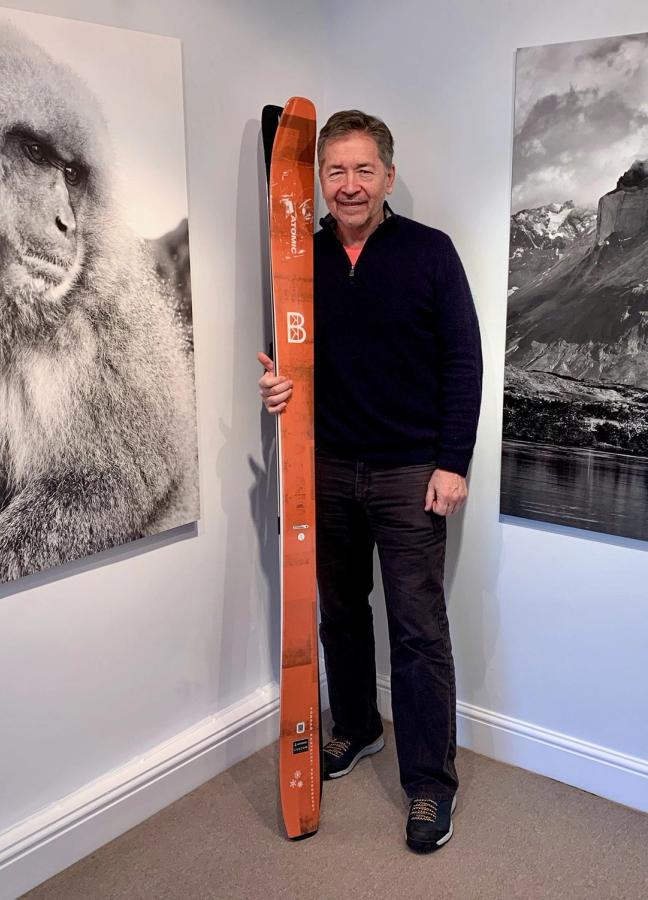
Konrad Bartelski
But, while Bartelski has been won over by the artistic side of ski customisation, does he believe in the science of bespoke equipment. Would he consider creating equipment tailored specifically to a skier’s height, weight and terrain preferences worth the money?
“The idea that a skis is made to one’s body, and the way that one moves, is an alien concept to me,” says the ski racer. “But that’s because, when I ski, I sense and feel what the ski is doing and react to that. If the ski doesn’t feel great, then I might make small adjustments to the tuning of the edges, which usually will resolve the issues that I might have felt before. Basically, if a ski is very fast in a straight-line, I would find a way to ski it.
“The truth is,” he adds, “that for 98% of skiers, skis are so good these days that the real value is having something in your hands that you love how it looks. A happy skier makes for a good skier”.
And Bartelski is nothing if not a happy skier. He details how, from the comfort of his home, he designed his new skis online — and then took delivery of them on his doorstep six weeks later. The existing model of ski he used was an Atomic Backland 107, and he’s incredibly happy with the bespoke, made-to-order result.
“There’s no extra cost for the service, either,” he says. “It’s amazing that more people aren’t taking advantage of such a personalised opportunity.”
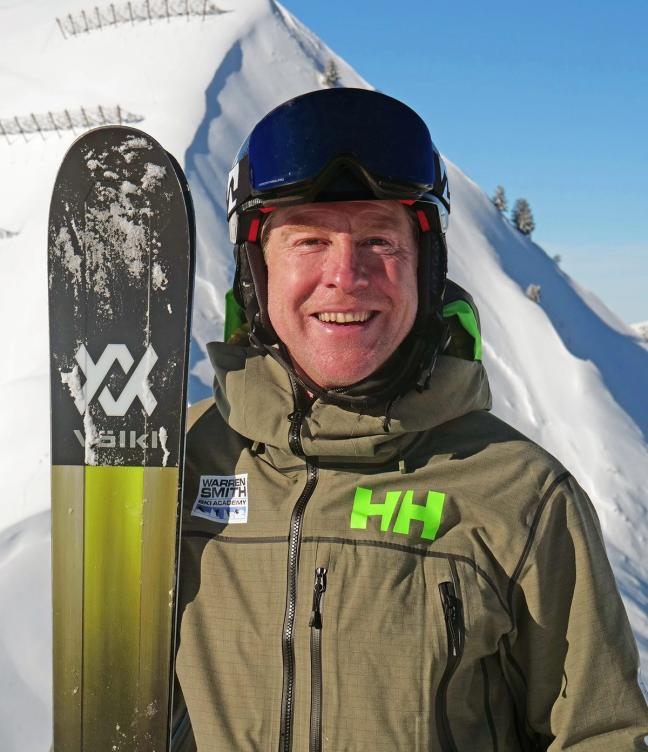
Warren Smith

Warren Smith is another man who makes his living on the slopes — running a professional ski training academy in Verbier. As an internationally-qualified performance coach, and one of the most innovative instructors working in the Alps today, Smith has never shied away from innovation and invention in the ski equipment sector.
But even he — a man consistently involved in the research and development of ski technique, biomechanics and physiology — is sceptical of the bespoke ski trend: “It takes top skiing professionals from brands many months of testing on snow and in labs to perfect even one model of ski,” he says. “So there is no way, in my opinion, that you can expect to do the same job as manufacturers, for example, such as Voelkl.”
So should you be buying a pair of bespoke skis this winter? For the majority of customers, it’ll come down to what you use them for — and what sort of skier you are. Are you a professional? A hobbyist? Do you want to improve your form or just turn heads? Thankfully, if you do want to invest, the options are out there; meticulously crafted and beautifully finished. You just need to figure out if they’re worth it for you. And, for Warren Smith, the choice was simple.
“My view on bespoke skis has two sides,” says the coach. “If you are buying bespoke skis because you want to look cool, stand out, and have your own kick-ass design — then go for it. If you are buying bespoke skis because you think you need to customise your ski length, flex, geometry — then forget it.”
Want more high-end gear? We dive into the expensive, exploratory world of personal submarines…
Become a Gentleman’s Journal member. Find out more here.
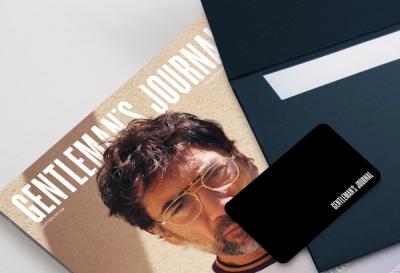
Become a Gentleman’s Journal Member?
Like the Gentleman’s Journal? Why not join the Clubhouse, a special kind of private club where members receive offers and experiences from hand-picked, premium brands. You will also receive invites to exclusive events, the quarterly print magazine delivered directly to your door and your own membership card.



